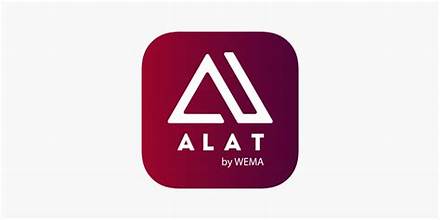How to Reduce Cognitive Load for Better SEO Performance

Cognitive Load – Where attention spans are dwindling and competition for online visibility is fierce; optimizing website user experience has become paramount for businesses looking to succeed in the digital realm. One crucial aspect of enhancing user experience is reducing cognitive load, a concept that directly impacts how users interact with and perceive a website.
By minimizing cognitive load, businesses can not only improve user satisfaction and engagement but also boost their SEO performance. This article delves into the significance of reducing cognitive load in website design and its implications for SEO, offering insights and strategies to help businesses enhance their online presence effectively.
Read: Cognitive Load Theory: Optimizing Learning and Performance
What is Cognitive Load?
Cognitive load refers to the mental effort required to process information and perform tasks. In the context of website design, cognitive load plays a crucial role in determining how users engage with a site and absorb its content.
High cognitive load can overwhelm users, leading to frustration, confusion, and ultimately, a negative user experience. On the other hand, reducing cognitive load involves simplifying the user interface, streamlining information, and optimizing the overall design to make it easier for users to navigate and comprehend the content.
The Impact of Cognitive Load on User Experience
High cognitive load can have detrimental effects on user experience, causing visitors to abandon a website prematurely, leading to high bounce rates and low conversion rates.
When users are bombarded with excessive information, complex navigation, or distracting elements, they are more likely to feel overwhelmed and disengaged.
By reducing cognitive load, businesses can create a more user-friendly experience that encourages visitors to stay longer, explore content, and take desired actions, such as making a purchase or filling out a form.
Cognitive Load and SEO Performance
Beyond enhancing user experience, reducing cognitive load can also have a positive impact on SEO performance. Search engines like Google prioritize websites that offer a seamless user experience, as reflected in factors such as bounce rate, time on site, and user engagement.
By optimizing website design to reduce cognitive load, businesses can improve these metrics, signaling to search engines that their site is valuable and user-friendly. This, in turn, can lead to higher search rankings, increased organic traffic, and ultimately, better SEO performance. For agencies offering White label SEO services, focusing on user-centric design not only enhances client results but also strengthens their own brand reputation by delivering measurable improvements in search visibility.
What are Some Common Causes of Cognitive Overload in Website Design
Some common causes of cognitive overload in website design include:
1. External Factors: Users’ external life and environment can impact cognitive load, such as distractions like loud noises or personal worries that drain working memory.
2. User Differences: Users have varying capacities for working memory, with experienced web users generally requiring less cognitive effort than those less familiar with online interactions.
3. Information Overload: Presenting too much information on a website can overwhelm users, hindering decision-making and task completion.
4. Complex Navigation: Difficult-to-navigate websites with unclear paths or excessive choices can strain working memory and lead to mental exhaustion.
5. Visual Clutter: Websites with cluttered layouts, excessive animations, or distracting elements can increase cognitive load and impede user focus.
6. Inconsistencies: Visual and functional inconsistencies, as well as typos and grammatical errors, can distract users from their tasks and contribute to cognitive overload.
7. Redundancies: Including unnecessary information or steps in the user journey can increase cognitive load and hinder task completion.
Strategies for Reducing Cognitive Load
There are several strategies that businesses can implement to reduce cognitive load and enhance user experience on their websites:
1. Simplify Navigation
Streamline the navigation menu by organizing content logically and reducing the number of menu items. Use clear labels and intuitive navigation paths to help users find information easily.
2. Optimize Page Layout
Design clean and uncluttered layouts that prioritize important content. Use white space effectively to guide users’ attention and avoid overwhelming them with too much information.
3. Minimize Visual Distractions
Avoid using excessive animations, pop-ups, or ads that can distract users from the main content. Keep design elements consistent and purposeful to maintain a cohesive user experience.
4. Use Readable Typography
Choose legible fonts, appropriate font sizes, and contrast ratios to ensure that text is easy to read. Break up content into digestible chunks and use headings to guide users through the information.
5. Optimize Page Speed
Improve loading times by optimizing images, minifying code, and leveraging caching techniques. A fast-loading website reduces cognitive load by providing a smoother browsing experience for users.
How can User Feedback Help Identify Cognitive Overload on a Website
User feedback plays a crucial role in identifying cognitive overload on a website by providing valuable insights into users’ experiences and perceptions. Here’s how user feedback can help in recognizing cognitive overload:
1. Identifying Pain Points: User feedback can highlight areas of frustration, confusion, or difficulty encountered by visitors while navigating the website. Patterns of complaints or concerns can indicate potential cognitive overload issues.
2. Pinpointing Confusing Elements: Users can point out specific design elements, content, or interactions that they find overwhelming or distracting. This feedback can help designers identify aspects of the website that contribute to cognitive load.
3. Highlighting Navigation Challenges: Users may struggle with finding information, completing tasks, or understanding the website’s structure. Feedback on navigation difficulties can indicate cognitive overload caused by complex or unclear pathways.
4. Revealing Information Overload: Users overwhelmed by excessive information or options may express difficulty in decision-making or information processing. Feedback on feeling inundated with content can signal cognitive overload.
5. Suggesting Solutions: User feedback often includes suggestions for improvement. By listening to users’ recommendations on how to simplify the design, streamline content, or enhance usability, designers can address cognitive overload effectively.
Conclusion
Reducing cognitive load is a fundamental aspect of optimizing website user experience and improving SEO performance. By simplifying design elements, streamlining information, and enhancing usability, businesses can create a more engaging and user-friendly website that resonates with visitors and search engines alike.
Incorporating strategies to reduce cognitive load not only enhances user satisfaction and retention but also boosts SEO rankings and drives organic traffic. By prioritizing cognitive load reduction in website design, businesses can set themselves apart in the digital landscape and achieve sustainable online success.






